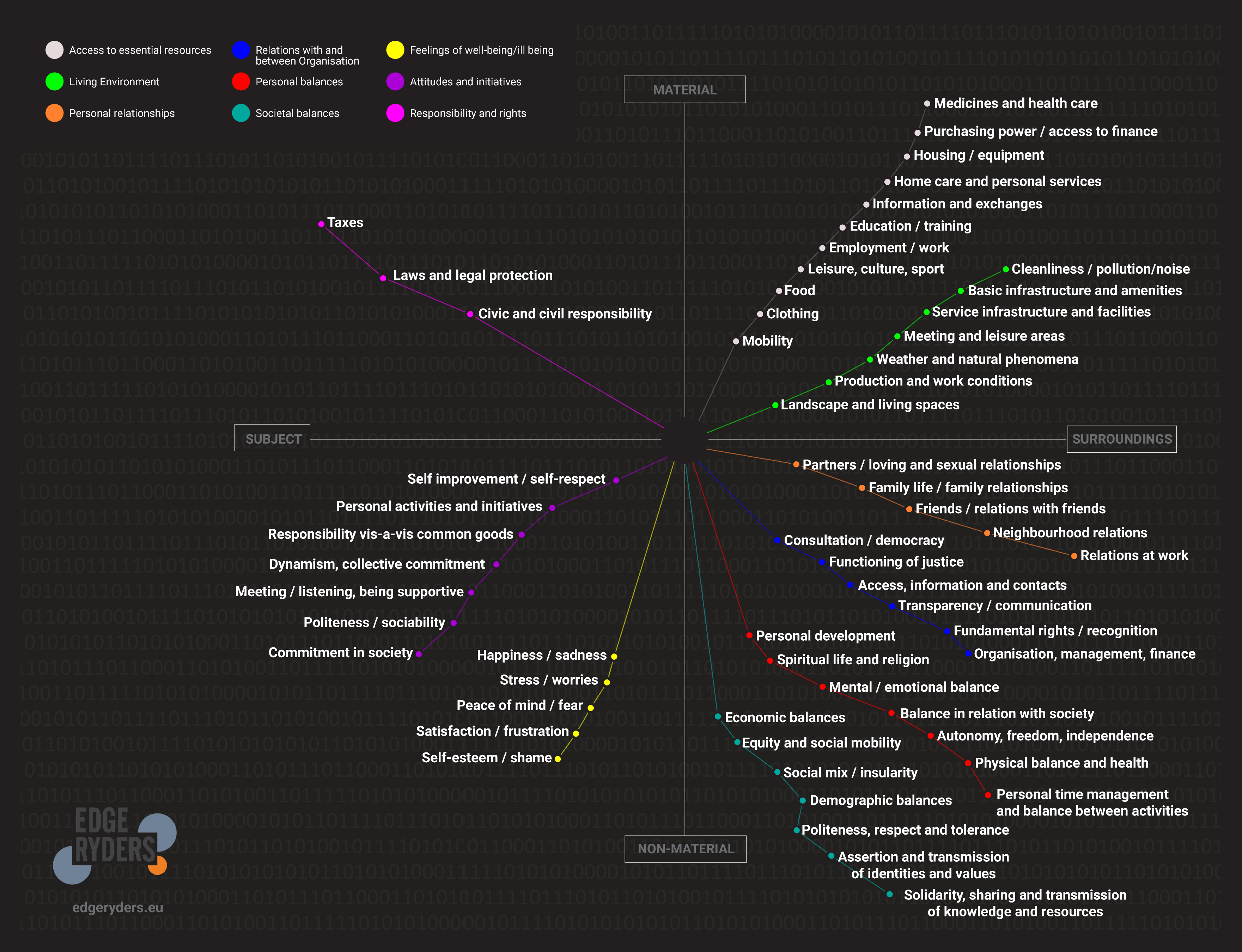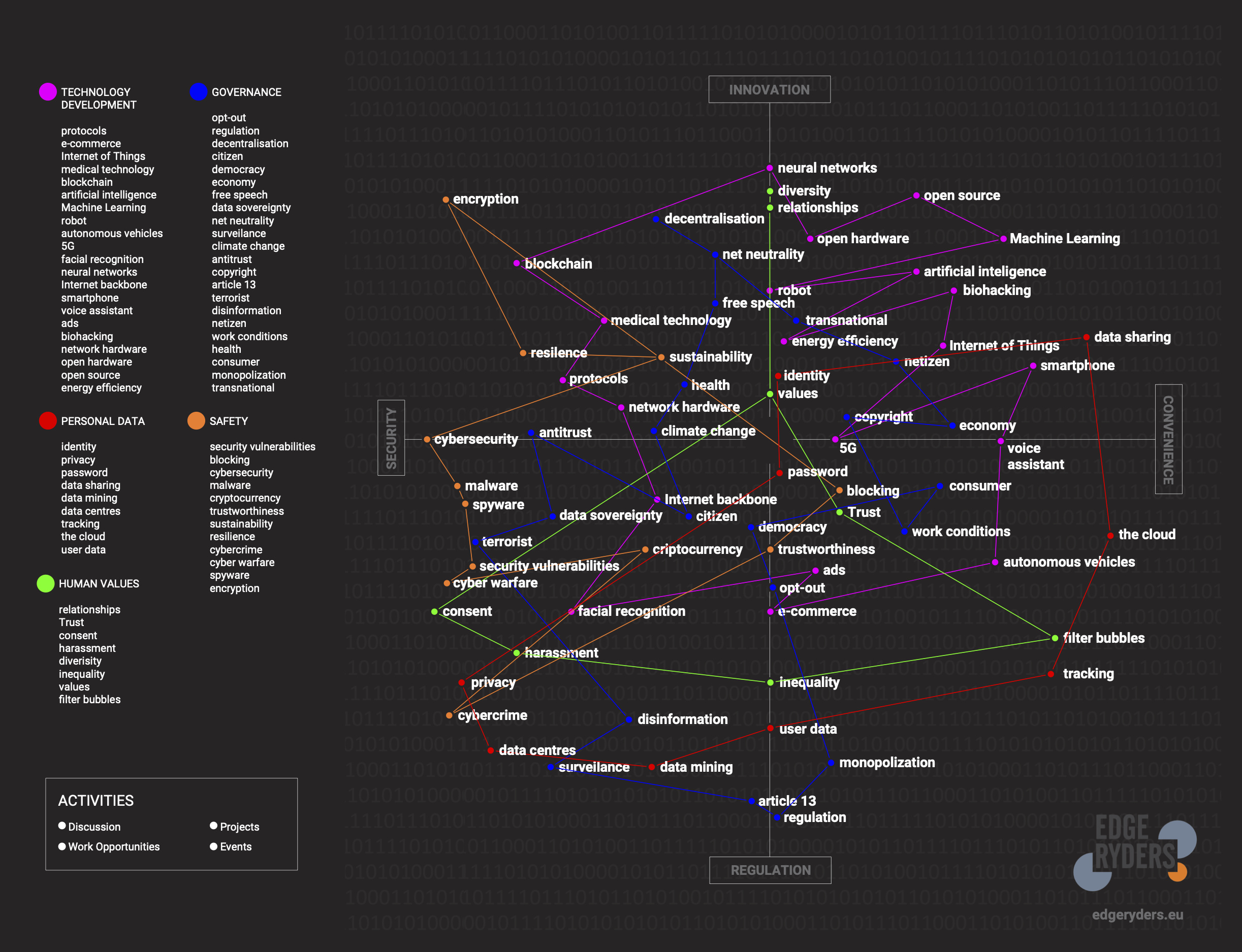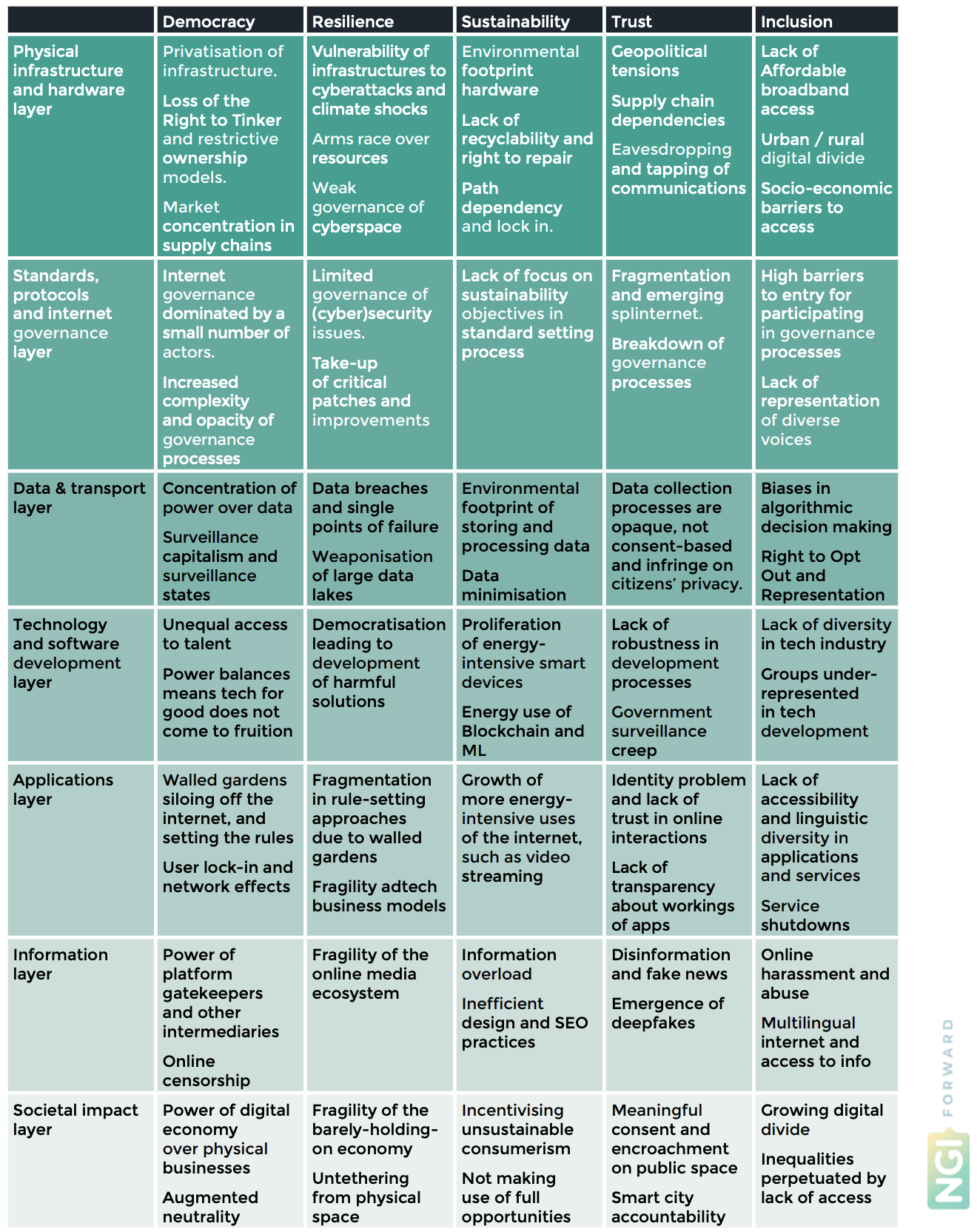Hi, in the NGI project we are currently building the community journalism anthology deliverable and setting the foundations for future outputs.
We owe it to others and to ourselves to produce something which elegantly weaves together what has been said into something which is relevant to people who have different entry points. There is a tendency for these discussions to be too far removed from the individual human concerns, desires and needs of the people who’s lives affect and are affected. Not as an abstract collective referred to as “the citizen”.
At the same time, if those multifaceted insights are to be actionable in practice, there is a need for bridging perspectives so that the document is relevant to people coming at it from different silos (policymaking area or priority e.G healthcare or economic development or education).,
So how do we connect the dots to ensure that regardless of how you do approach any NGI-related topic, you cannot simplify it to a disembodied, abstract debate about this or that tech. Nor miss the connections of your own area of focus, with other areas of focus (and the people tasked with delivering on them).
To give you a sense of the complexity involved: Here we have three different layers when exploring , sdgs, wellbeing and the strictly tech bits. We need to find a way to reconcile them.
From our work on helping insitutions tasked with devising measures to reach the SDGs, we know that they are pretty big categories and do not necessarily reflect neither how people think about the conditions for wellbeing in their own lives… nor credible paths or measures towards ensuring these needs are met. So we go a bit deeper: This is visualisation of wellbeing indicators as developed by Council of Europe through consultation with people in something like 100 cities and towns around Europe and ostensibly reflects how people articluate/ think about this stuff (we can agree or not, but this has an insitutional legitimacy to it, so it’s difficult to dismiss in a policy setting):

You will see that they do not really match the tech-as-point of departure ways of clustering NGI topics e.g

or the structuring of topics in the policy document submitted to the European Commission:

These disconnects need to be bridged in an output that weaves together human and the technological to the degree required. So as to ensure we do not simply carry over the disconnects of the public discourse and siloed discussions into our own work.
This is where we need our ethnography and ssna crew to help figure out this bridging - the question is how?